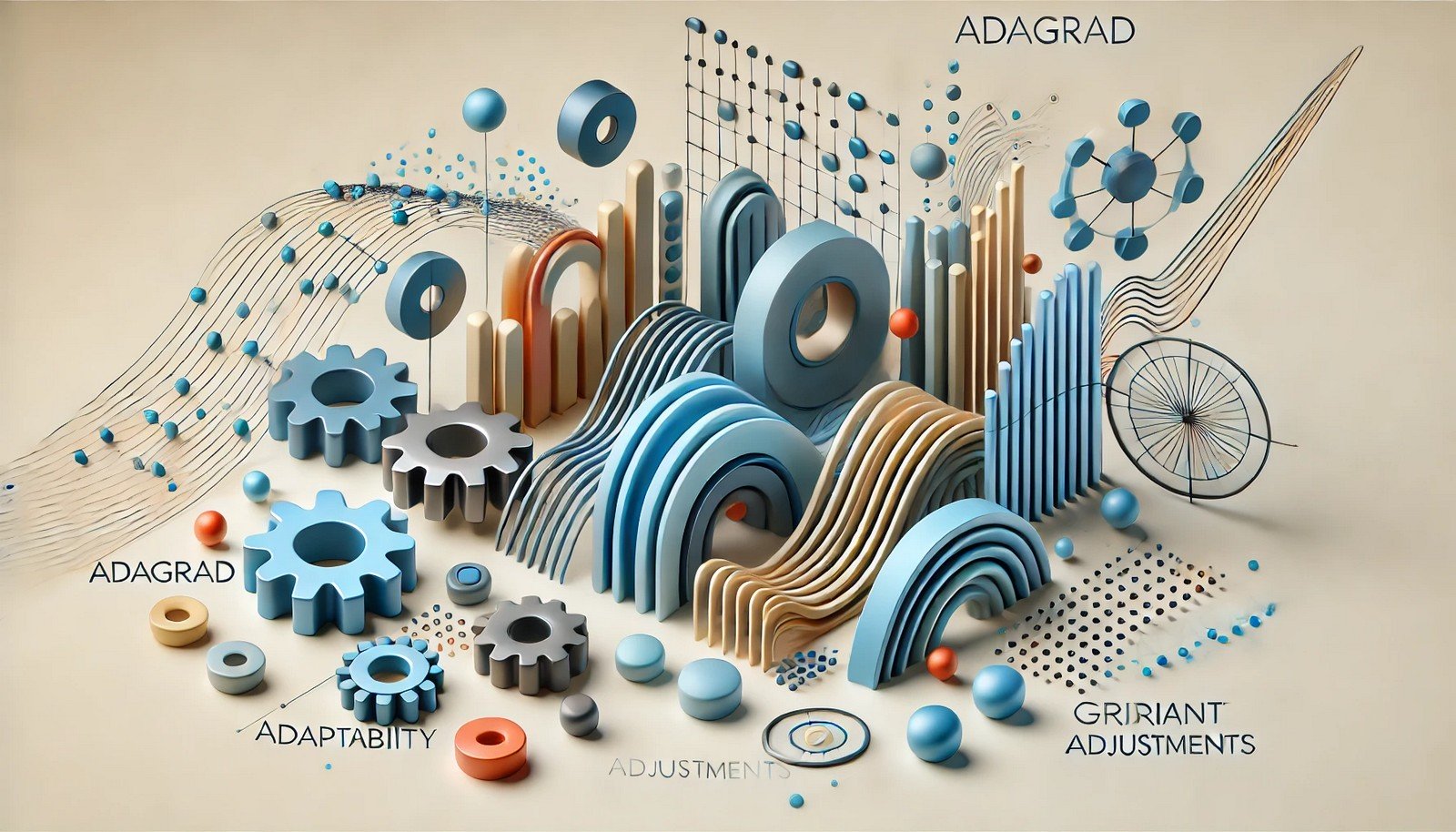Adagrad

Quick Navigation:
- Adagrad Definition
- Adagrad Explained Easy
- Adagrad Origin
- Adagrad Etymology
- Adagrad Usage Trends
- Adagrad Usage
- Adagrad Examples in Context
- Adagrad FAQ
- Adagrad Related Words
Adagrad Definition
Adagrad is an optimization algorithm used in machine learning and deep learning that dynamically adapts the learning rate for each parameter in a model. Unlike traditional gradient descent, Adagrad makes adjustments based on previous gradients, scaling learning rates to prevent excessive updates. This method is especially useful for handling sparse data, as it assigns smaller learning rates to frequently updated features and larger rates to less common ones.
Adagrad Explained Easy
Imagine learning how to bake but adjusting the time each ingredient spends in the oven based on how it’s reacting—flour might need less heat, while eggs need more. Adagrad works similarly, giving each part of a model the exact amount of “learning” it needs by tweaking rates separately. This means it won’t overcook or undercook parts, helping the model improve faster.
Adagrad Origin
Developed as an enhancement to traditional gradient descent, Adagrad emerged in the early 2010s to tackle challenges in training deep learning models, particularly when dealing with large-scale or sparse data sets.
Adagrad Etymology
The term “Adagrad” is a portmanteau of "adaptive" and "gradient," reflecting its core approach of adjusting learning rates based on gradient information.
Adagrad Usage Trends
In recent years, Adagrad has become widely used in machine learning for applications involving large, sparse datasets, such as natural language processing (NLP) and recommendation systems. It is particularly popular in contexts where models can benefit from data-dependent learning rates, allowing more efficient optimization.
Adagrad Usage
- Formal/Technical Tagging:
- Machine Learning
- Deep Learning
- Optimization Algorithm - Typical Collocations:
- "adaptive gradient algorithm"
- "Adagrad optimization"
- "learning rate adaptation with Adagrad"
- "sparse data in Adagrad"
Adagrad Examples in Context
- Adagrad is widely used in training models that process natural language data, where word frequency varies significantly.
- It is applied in recommendation systems, ensuring that underrepresented items receive adequate model focus.
- Adagrad helps in neural network training by automatically adjusting learning rates for each parameter based on usage.
Adagrad FAQ
- What is Adagrad?
Adagrad is an adaptive optimization algorithm that adjusts learning rates for each model parameter individually based on gradient history. - Why is Adagrad useful?
It prevents overly large updates to frequently updated parameters, which is helpful for sparse data like language models. - How does Adagrad differ from standard gradient descent?
Unlike standard gradient descent, Adagrad dynamically adjusts learning rates, benefiting models that process sparse data. - What types of models benefit most from Adagrad?
Models with sparse data input, like NLP or recommender systems, benefit greatly from Adagrad’s parameter-specific learning rates. - Is Adagrad computationally intensive?
Adagrad can be more intensive due to the need to maintain cumulative gradients for each parameter. - Can Adagrad be combined with other optimization techniques?
Yes, Adagrad can be combined with algorithms like Adam to leverage both adaptive rates and momentum. - How is Adagrad related to RMSprop?
Both are adaptive algorithms, but RMSprop modifies Adagrad by including decay factors to manage cumulative gradients better. - When was Adagrad developed?
Adagrad was introduced in a 2011 research paper by Duchi, Hazan, and Singer. - Is Adagrad suitable for real-time applications?
Its computational demands can make it less suitable for high-speed, real-time tasks without optimization. - What are Adagrad’s limitations?
Over time, its cumulative gradients can lead to learning rate decay, which may hinder model performance for prolonged training.
Adagrad Related Words
- Categories/Topics:
- Machine Learning
- Deep Learning
- Optimization Algorithms
Did you know?
Adagrad's adaptability has influenced the development of other popular algorithms like RMSprop and Adam, which also adjust learning rates to improve model convergence. This makes Adagrad a foundational algorithm in optimization for modern AI applications.
PicDictionary.com is an online dictionary in pictures. If you have questions or suggestions, please reach out to us on WhatsApp or Twitter.Authors | Arjun Vishnu | @ArjunAndVishnu

I am Vishnu. I like AI, Linux, Single Board Computers, and Cloud Computing. I create the web & video content, and I also write for popular websites.
My younger brother, Arjun handles image & video editing. Together, we run a YouTube Channel that's focused on reviewing gadgets and explaining technology.



Comments powered by CComment